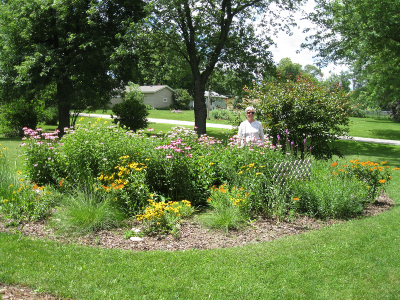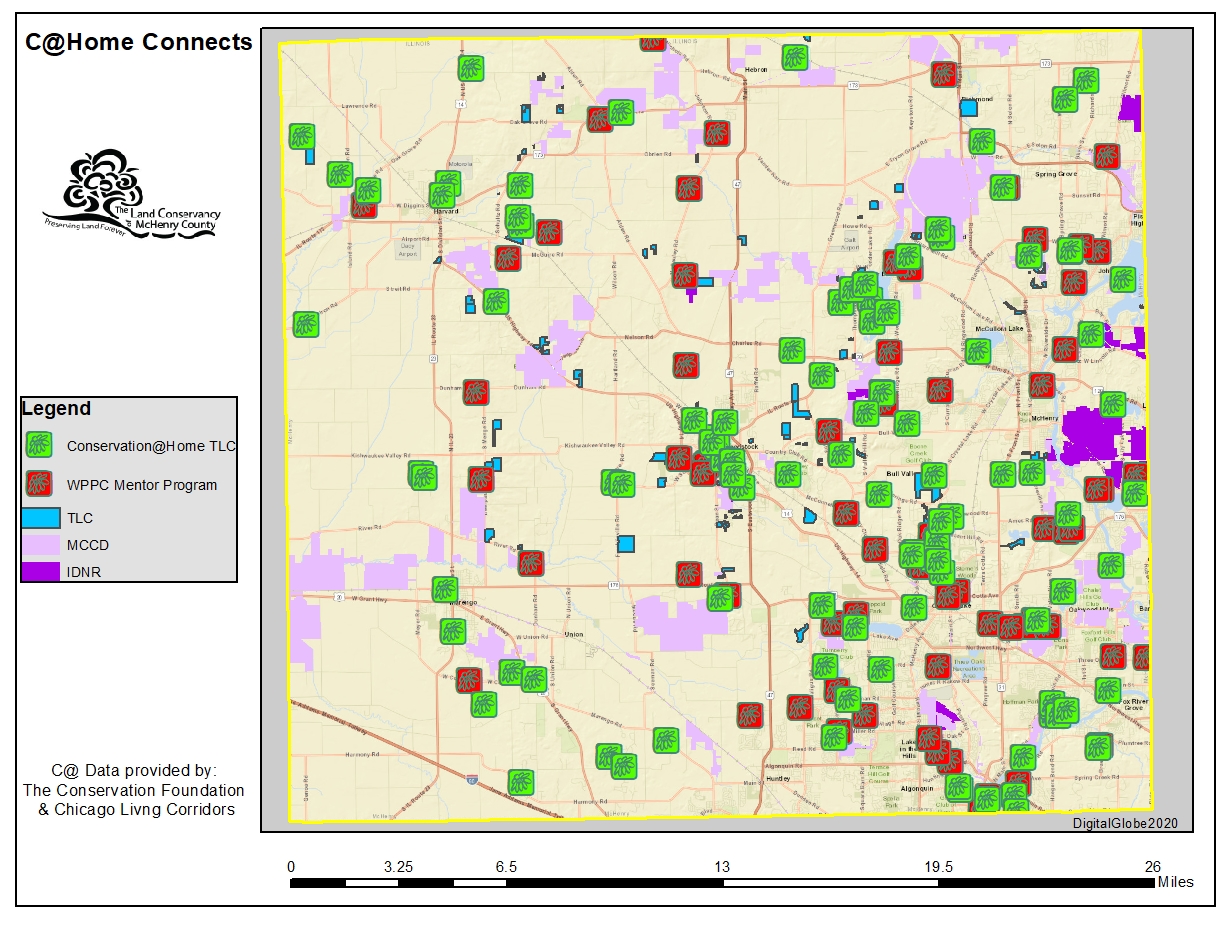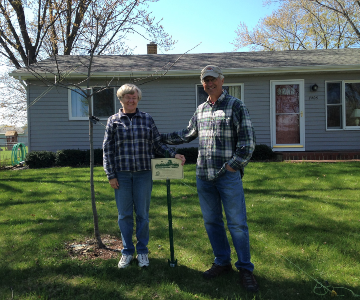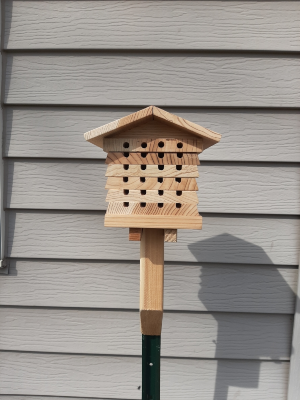
You can care for nature at home in McHenry County!
Whether you have acres of land, or a small patch of earth, anyone can make a difference by caring for nature at home.

Dave and Colleen Zeiger’s native plant garden is a corridor for birds, bees and insects in McHenry County.
Believe it or not, a little garden can do a lot to preserve biodiversity, and people throughout the county are doing their part!
Native plant gardens dotted throughout the county create corridors for wildlife like birds and insects in an expanse of manicured lawns. And there’s no need to spend thousands of dollars on native landscaping – you can make small changes, one plant, shrub or tree at a time.
Doug Tallamy is a professor of Entomology and Wildlife Ecology at the University of Delaware who advocates for adding nature to every yard, not reserving it for parks and preserves. He says, “Envision your property as one small piece of a giant puzzle, which, when assembled, has the potential to form a beautiful ecological picture.” He calls it the Homegrown National Park.
This is evidenced by the number of Conservation@Home properties (175 participating yards) and people participating in the Wildflower Preservation and Propagation Committee’s (WPPC) garden mentoring program. Their goal is to help homeowners transform traditional lawn and gardens to native plant gardens.

Sites dotted throughout the county create beneficial corridors for wildlife.
Dave Zeiger, TLC’s oak conservation outreach specialist, and his wife Colleen live on a lot just under .5 acre in Wonder Lake. Their 350-square-foot garden has been the result of experimenting with a number of native plants, and each year they work to refine and improve it.

The Zeigers display their Conservation@Home sign proudly.
The inspiration
Dave grew up in McHenry County and became a teacher in Crystal Lake D47. With a love of the outdoors, but with little knowledge of the land’s ecological history, he and his colleagues took a summer outdoor class at Taft on the Rock River emphasizing the geological/ecological heritage of northern Illinois. They were introduced to the idea of restoring the land. His middle school team got inspired and began a prairie project on the school grounds. Dave and Colleen began one at home, too.
The Zeiger prairie
The Zeigers began their home prairie project with little knowledge of prairie plants and no vision of what their garden would look like. They started by buying three flats of plants from McHenry County Soil and Water Conservation District.
Their approach was:
1. Let’s just experiment and see what happens.
2. The garden is not a permanent structure, these are plants, and they decided they could change things as they went along.
3. Where do we plant the garden? At the back corner of the property, or near the house by the patio? (They decided to plant by the patio.)
They started their garden in 1995, and after a few years their plants matured. The Zeigers enjoyed their garden but found the lack of planning created a disheveled look that wasn’t appealing, and it didn’t help that a visitor referred to it as a “weed patch”. They decided to create more of a traditional garden look, adding a stepping stone trail through the prairie, piling their rock collection at one end and planting a crab apple tree on the other. They removed the taller plants, going with only short to medium heights, which works well in their yard. They continue to diversify by adding a few additional plants each year like short grasses and plants in a variety of colors.
Over the years they have added a bird bath, bluebird boxes and native shrubs. This spring they are placing a solitary bee house near the prairie.

A bee box is the latest addition to the Zeigers’ garden.
The result
The project has given the Zeigers much joy! Planting the prairie a few steps off of their back patio has been rewarding. They enjoy sitting on the patio or walking with their morning coffee along the garden path. A spectrum of blooms take turns from spring to late fall. Life abounds in their garden with bees, butterflies, birds, moths, rabbits and a host of insects. On cool mornings, you can gently “pet” a mason bee as it sits on a flower waiting for the warmth of the sun. There is constant activity. They are proud of their native plant garden and enjoy sharing it and the life it brings with visitors.
Native plants that have worked well in the Zeigers’ garden include: spiderwort, blazing star, blue and red lobelia, purple coneflower, Missouri primrose, prairie smoke, wild onion, shooting star, prairie dropseed, little bluestem, lead plant, columbine, black-eyed susan, bergamot, wild blue indigo, rattlesnake master, coreopsis, sky blue aster and butterfly weed.
Learn more!
Conservation@Home
The WPPC
Books: Bringing Nature Home and Nature’s Best Hope by Doug Tallamy